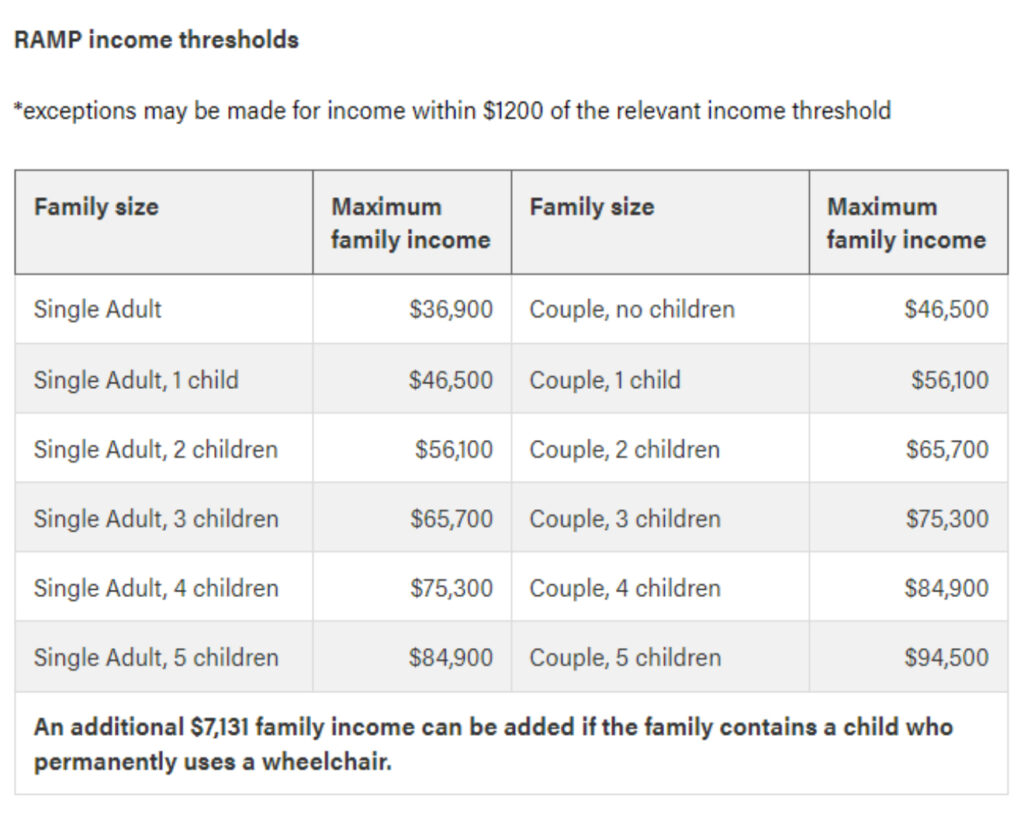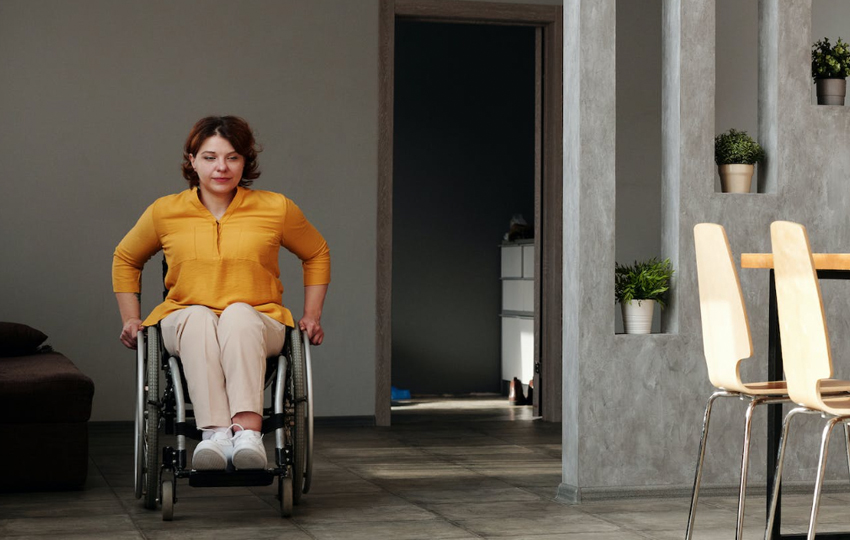Accessibility renovations play a crucial role in ensuring comfort, independence, and safety for individuals who choose to age in place or require modifications for better accessibility. However, the costs associated with these renovations can seem overwhelming for many homeowners – especially if you are no longer able to work or you require in-home care.
Thankfully, in Alberta, both the provincial and federal governments offer a range of grants and other incentives to support homeowners in their endeavor to make their homes more accessible and conducive to aging in place. These grants aim to alleviate the financial strain and empower individuals to create living spaces that cater to their specific accessibility needs. In this article, we will explore the various government grants available to Alberta homeowners for accessibility renovations, with valuable information on eligibility requirements and specific programs that help you move out of the planning phase and into a home that allows you to live with dignity, independence, and comfort.
Eligibility Requirements for Accessible Renovation Grants
When considering government grants for accessibility renovations in Alberta, it is essential to understand the general eligibility criteria. Specific grants differ from one to the next, but there are certain common factors that homeowners must meet to qualify. Typically, eligibility is determined based on factors such as:
1. Residency: Obviously, primary residency in Alberta is a requirement to receive these grants, as they aim to support local homeowners in creating safe and inclusive living spaces.
2. Need: Income level is often considered to ensure that grants assist those with financial constraints. Income thresholds vary among grant programs, so homeowners must understand the specific requirements of the grant they wish to apply for.
3. Type of Renovation: Many grants are targeted towards specific accessibility improvements such as ramps or bathroom modifications. Homeowners should understand their renovation plans as they pertain to each grant’s guidelines and keep track of all supporting documents to show why each choice was made.
4. Accuracy of Applications: Each grant program has specific procedures and documents to submit, and failure to meet these requirements can lead to rejection.
Some grants prioritize individuals with disabilities or seniors, and additional criteria related to those factors may apply. Although it may seem like a lot of work to do, securing an accessibility grant can take a great financial weight off your shoulders and bring a new sense of excitement and joy to the renovation process.
Grants for Disabled Homeowners
In addition to the broader accessibility grants available, there are disability grants that cater to the unique needs of homeowners with specific physical or cognitive impairments. These grants are not limited to renovations specifically, and may offer financial assistance for smaller accessibility items, such as smart technology, automated home appliances, and small fixtures (e.g., weight-bearing towel racks) to facilitate easier movement. While larger-scale renovations are crucial for overall accessibility, these disability grants focus on enhancing daily living and providing technological solutions to improve independence and quality of life.
It can be difficult to know all your options if you are new to the world of accessible home renovations. Luckily, the experts here at MyLifetimeHome are just a phone call away – and we’ve got many years of experience navigating these grants, and plenty of advice to help you apply.
Different Types of Homeowner Grants
As an Albertan, you have access to various types of grants – but each one is not created equal; understanding the specific requirements and limitations associated with each grant will help you choose those that best apply to you.
Provincial Grant Programs
Program grants are a longstanding vital resource for homeowners seeking accessibility renovations in Alberta. These grants are typically administered through specific programs designed to address accessibility needs; they provide financial support to homeowners based on the nature of their renovation projects and specific program guidelines.
To access program grants, homeowners must follow the application procedures outlined by the respective programs, which may include submitting detailed renovation plans, cost estimates, proof of need for the desired equipment, compliance with regulations, and other documentation. Applying takes time, but getting one of these grants can mean more money back in your pocket.
Tax Credits
Another avenue for assistance comes in the form of non-refundable federal tax credits. These tax credits allow homeowners to claim a portion of their renovation expenses as credits against their federal income tax. Unlike grants, tax credits do not provide immediate financial support but rather, they will reduce your overall tax liability.
These credits may have limitations, such as maximum claimable amounts or specific eligible expenses. If you choose to claim one, you should carefully review the details and consult with tax professionals to understand and reap the benefits of doing so.
Accessibility Grants for Alberta Homeowners
Here are a few of the grant options available to homeowners choosing to proactively age in place and renovate their home for increased accessibility in Alberta:
The RAD Renovations Program
The RAD Renovations Program focuses on improving home accessibility for individuals and seniors with limited mobility. It provides support in various areas, including:
- project-specific funding applications
- home assessments
- modification layouts
- contractor sourcing
- quote procurement
- construction coordination
Some potential accessibility renovations covered by the RAD Renovations Program include porch lifts, ramps, barrier-free showers, stairlifts, carpet removal, and doorway widening. The program ensures that individuals with limited mobility can make the necessary modifications to improve their quality of life.
To access the program, homeowners need to complete an application, which can be downloaded from the program’s website or obtained by contacting them directly. The grant amount and eligible renovation expenses can vary based on the specific project and funding sources, but the overall aim is to alleviate the financial burden and provide support in an already difficult time.
The Residential Access Modification Program (RAMP)
The Residential Access Modification Program (RAMP) provides funding to low-income Albertans with mobility challenges, enabling them to make accessibility improvements in their homes. The program offers grants of up to $7,500 per person each benefit year (April 1 to March 31) and up to $15,000 per person within a 10-year period. To be eligible, you must be:
- A Canadian citizen/permanent resident, who has lived in Alberta for at least 90 continuous days
- Reliant on a wheelchair, or a senior who uses a 4-wheel walker
- Living with a progressive neurodegenerative disease, such as muscular dystrophy, ALS, or spina bifida
- A homeowner, tenant, or family member of someone who meets the above requirements
- Within a specific income bracket

(from Alberta.ca)
Eligible projects must be permanent modifications to the applicant’s own living space and generally completed within 90 days of approval. This covers many of the most common accessibility renovations for easier movement, including elevators, ramps, widened doorways, bathroom expansion, and remodeled floorplans.
To apply for RAMP, first look through the program guidelines and see if it’s right for you. If so, submit the application along with supporting documents to the RAMP office in Edmonton, where you should hear back within 30 days. If you require more assistance with this, let us know! We’d be happy to help guide you on a journey toward a better quality of life in your home.
The Seniors Home Adaptation Repair Program
The Seniors Home Adaptation Repair Program (SHARP) is designed to assist seniors in maintaining their independence and safety by using low-interest home equity loans to cover repairs, accessibility modifications, and renovations to their primary residence.
To be eligible for SHARP, seniors must:
- have an annual income of less than $75,000 or less
- be 65 years of age or older (or have a partner who meets this requirement)
- be Canadian citizens or permanent residents
- have resided in Alberta for at least three months.
The program offers a maximum loan of up to $40,000 to eligible seniors, with a minimum of 25% home equity in their primary residence.
Under SHARP, seniors can apply for retroactive funding by providing receipts for work completed and paid for within the 12 months prior to the application. This eligible work covers many different areas of the home, such as including bathroom modifications, heating upgrades (furnace or hot water), stair lifts and elevators, doorway expansion, and replacement of windows and roofing.
One interesting fact about this program is that seniors who receive it are not required to make monthly repayments. Recipients can choose to repay at any time, with the loan becoming due when the home is sold, when the applicant is no longer the registered owner, or the home is no longer the primary residence. Repayment can be made at any time without penalty.
There is much more information available on the Government of Alberta website. For a more robust look at the details and options you may have, visit their dedicated page here.
Federal Non-Refundable Home Accessibility Tax Credit
While not a “grant”, per se, the HATC is a non-refundable tax credit available to homeowners in Canada who have made eligible renovations to improve the safety or accessibility of their homes. Individuals can claim up to $20,000 per year in eligible expenses on line 31285 of their tax return.
To be eligible for the credit, individuals must either be 65 years of age or older or be eligible for the Disability Tax Credit (DTC) during the filing year. The credit can also be claimed on behalf of a dependent, provided certain criteria are met.
There is no definitive list of renovations that are covered, but in order for any home modification for accessibility to be considered, it must be:
- permanently incorporated into the home, and either
- enable the person to access the home or move around within the home, or
- reduce the risk of harm within the home or when accessing the home.
There is a lot of information here, and trying to figure out what you need and where to send it can be quite a laborious task for homeowners already dealing with other stresses. So, if you need guidance or assistance, don’t hesitate to reach out to us at MyLifetimeHome – our dedicated team is here to provide the support and expertise you need to secure additional funds and make your home truly feel like home once again. Contact us today and let’s embark on this journey together, creating a warm and inviting space that brings you comfort, independence, and a satisfied peace of mind.


Recent Comments